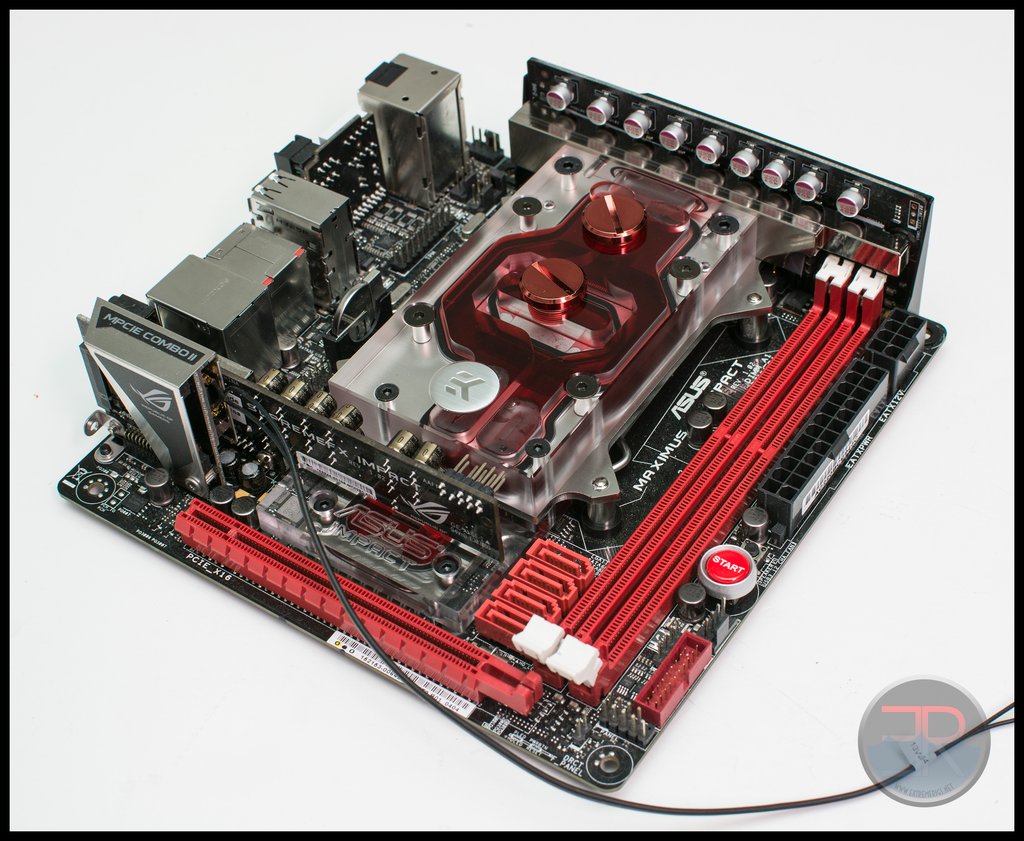The Impact is a small board with a lot of cramped components:
To fit the Impact we must first remove the Wifi/SSD daughtercard, the sound daughtercard and the CPU locking bracket:
Removing and fitting the new cpu backplate is the most delicate part of the operation because it is here that you risk bending pins in the socket. I personally kept the CPU in the socket and kept a finger on the CPU IHS at all times in order to never expose the socket to damage. It would have been nice if EK could have found a way to not have to replace the backplate because this may be too advanced for some end users.
Once the new backplate has been fitted and the CPU again secured the south bridge can be removed:
Here there is still a thermal pad sitting on top of the south bridge itself which must also be removed.
Next the VRM heat sink can be removed. The backplate comes off first but will be reused:
Then the VRM heatsink itself can be removed. Note that the chokes are not cooled by Asus as is typical:
The EK thermal pads and TIM can then be applied:
The block has to be slid into place almost diagonally but it’s pretty easy to do so. EK recommend a test fit before securing the block. This is a good idea as it revealed that the m3x4 screws provided by EK to secure the VRM section were too short, while the replacement M3x6 screws that I tried were too long and didn’t make a good impression into the thermal pad. M3x5 was found to be the perfect screw instead. We contacted EK to see if this has been a problem for other users and were told that the M3x4 screws were a mistake and that M3x5 screws were now sent out instead. A little disappointing that this happened.
As mentioned before the Asus backplate does get reused:
And the daughtercards can be reattached over the top of the EK blocks:
Here is the block ready for thermal testing which is up next:





















I would love a Maximus Gene VI version of this. The southbridge might be cooled without the inlets and outlets blocking the second PCIE 3.0 slot. But mostly it would just look bad ass.
[…] you’re focussed on every last degree you might want to wait for EK’s monoblock. In our Impact testing we saw that the monoblock performed better thermally as well as being lower restriction than a […]
[…] we’ve had a new CPU block up for test. The last mini cpu block testing we did was on the Impact Monoblock. For this review we will still be testing on the 4770K/Max VI Impact combo, but at a different […]
Most consumers will be considering Monoblock (based on the previous Supremacy) vs the Supremacy EVO, comparison of Delta T vs Supremacy EVO would make an interesting comparison also. It would also be interested to know the pressure drop of this monoblock compared to CPU only solutions.
I think these would be relevant given that Z97 chipset and Power MOSFET passive temperatures don’t seem excessive.
Anyways, thank you. Appreciate the review.
Comments are closed.